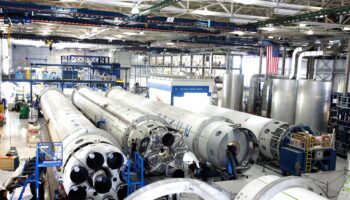As technology advances at an astonishing pace, the realm of air travel is poised for a revolutionary transformation. The development of supersonic and hypersonic aircraft is set to reshape the way we perceive time and distance in air travel, ushering in an era of unprecedented speed, efficiency, and connectivity. Fast planes are on the horizon, and their impact promises nothing short of groundbreaking.
Breaking the Sound Barrier: The Rise of Supersonic Travel
Supersonic travel, once the realm of science fiction, is becoming a reality. Aircraft designed to travel faster than the speed of sound set dramatically reduce travel times across the globe. With the ability to fly at speeds exceeding Mach 1 (approximately 767 mph or 1,235 km/h), these planes will enable travelers to cover distances that previously took hours matter of minutes.
Shortened Travel Times: The most immediate and tangible impact of supersonic planes will be the drastic reduction in travel times. Flights that currently take several hours could be completed in half the time, transforming long-haul journeys into brief excursions.
Global Accessibility:
The increased travel time will make previously remote or less accessible destinations more feasible for short trips. Business meetings, tourism, and cultural exchanges will benefit from enhanced connectivity.
Economic Implications:
Supersonic travel could lead to the rise of new markets and business opportunities. As travel time becomes quicker and more convenient, international commerce and global partnerships could flourish.
Revolutionizing Hypersonic Flight: Pushing Boundaries Even Further
Beyond supersonic, the realm of hypersonic flight pushing the boundaries of what was once thought possible. Hypersonic aircraft travel at speeds above Mach 5, surpassing the constraints of conventional air travel. These planes have the potential to change air travel scenarios in even more profound ways:
Transcontinental Connectivity:
Hypersonic aircraft could make transcontinental flights almost as swift as domestic trips. It would redefine the concept of a “long-haul” journey, making distant destinations feel remarkably close.
Space Exploration:
Hypersonic technology has implications beyond Earth’s atmosphere. Some hypersonic vehicles are designed to transition from atmospheric flight to spaceflight, offering new possibilities for space tourism, research, and satellite deployment.
Environmental Considerations and Challenges
While the prospect of fast planes revolutionizing air travel is exciting, it’s urgent to consider the potential challenges and ethical implications:
Environmental Impact:
Faster planes often consume more fuel and emit higher levels of greenhouse gases. The challenge lies in developing these technologies in an away that minimizes their environmental footprint.
Regulations and Safety:
As aircraft move faster, new safety considerations and regulations must develop to ensure the safety of passengers and communities on the ground.
Economic Accessibility:
While fast planes offer unprecedented speed, ensuring this technology is accessible to a wide range of travelers is essential to avoid creating a divide between different socioeconomic groups.
Conclusion
The development of fast planes, whether supersonic or hypersonic, promises to reshape the landscape of air travel in ways that will considered unimaginable. As time and distance compressed, the world becomes more interconnected, opening up possibilities for business, exploration, and human connection. However, realizing the full potential of this technology requires a balance between speed, safety, environmental responsibility, and accessibility. The age of fast planes is upon us and as these technologies take flight, they hold the power to redefine our perception of air travel and propel us into a future of unprecedented speed and connectivity.
- THE EVOLUTION OF PLASTIC SURGERY - 17 June 2024
- CHOOSE THE RIGHT PERSONAL INJURY LAW FIRM IN CHARLOTTE NORTH CAROLINA - 16 June 2024
- Email UX optimization, offering actionable insights - 16 June 2024





